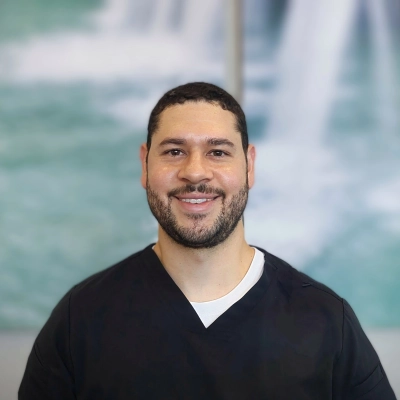6 Innovative Rehabilitation Techniques for Brain Injury Survivors and their Results
Brain injury survivors now have access to groundbreaking rehabilitation techniques that offer new hope for recovery. From virtual reality simulations to music therapy, these innovative approaches target various aspects of cognitive and motor function. Recent studies have shown promising results, demonstrating significant improvements in mobility, language skills, and overall quality of life for patients undergoing these cutting-edge treatments.
- Dual-Task Training Enhances Cognitive-Motor Function
- Virtual Reality Simulations Accelerate Motor Recovery
- Neurofeedback Improves Cognitive Abilities
- TMS Boosts Neuroplasticity in Brain Injury
- Music Therapy Restores Language and Communication
- Robotic-Assisted Gait Training Improves Mobility
Dual-Task Training Enhances Cognitive-Motor Function
One therapeutic activity I like to use with my patients is dual-task training. This training focuses on the use of a cognitive task while completing a motor task, with the end goal of improving overall cognitive-motor function.
One example of this could be navigating a simulated "errand" in the clinic: walking while collecting items, handling money, or recalling a shopping list.
By focusing on dual-task training, I have seen many people improve their ability to sustain and divide attention to daily activities in the community or home setting.

Virtual Reality Simulations Accelerate Motor Recovery
Virtual reality simulations have shown promising results in enhancing motor skills recovery for brain injury survivors. These immersive environments allow patients to practice real-world tasks in a safe and controlled setting. By engaging multiple senses, virtual reality helps rewire neural pathways and improve coordination.
Patients can gradually increase the difficulty of tasks, leading to better outcomes in their physical abilities. The gamification aspect of virtual reality also keeps patients motivated and engaged in their rehabilitation process. Healthcare providers should consider incorporating virtual reality simulations into their treatment plans for brain injury survivors to potentially accelerate motor skills recovery.
Neurofeedback Improves Cognitive Abilities
Neurofeedback training has emerged as an effective technique for improving cognitive function and focus in brain injury survivors. This method involves monitoring brain activity in real-time and providing immediate feedback to the patient. Through this process, individuals can learn to regulate their brain waves and improve their mental performance.
Neurofeedback has shown positive results in enhancing memory, attention, and problem-solving skills. The non-invasive nature of this technique makes it a safe option for long-term use in rehabilitation programs. Brain injury survivors and their caregivers should explore the possibility of including neurofeedback training in their recovery journey to potentially boost cognitive abilities.
TMS Boosts Neuroplasticity in Brain Injury
Transcranial magnetic stimulation (TMS) has demonstrated its ability to boost neuroplasticity processes in brain injury survivors. This non-invasive technique uses magnetic fields to stimulate specific areas of the brain, promoting the formation of new neural connections. TMS has shown promise in improving various cognitive and motor functions affected by brain injuries.
The targeted nature of TMS allows for personalized treatment plans based on each patient's specific needs. As research in this field continues to advance, more refined protocols are being developed to maximize the benefits of TMS. Brain injury survivors should discuss with their healthcare providers whether TMS could be a suitable addition to their rehabilitation program to potentially enhance their recovery process.
Music Therapy Restores Language and Communication
Music therapy has proven to be a powerful tool in accelerating language and communication restoration for brain injury survivors. This approach harnesses the brain's natural response to music to stimulate neural pathways associated with speech and language. Through activities like singing, rhythm exercises, and instrument playing, patients can improve their verbal skills and overall communication abilities.
Music therapy also offers emotional benefits, reducing stress and anxiety often experienced during the rehabilitation process. The versatility of music therapy allows it to be tailored to each patient's preferences and cultural background. Brain injury survivors and their families should consider exploring music therapy options to potentially enhance their communication recovery and overall well-being.
Robotic-Assisted Gait Training Improves Mobility
Robotic-assisted gait training has shown significant improvements in mobility outcomes for brain injury survivors. This innovative technique uses advanced robotic devices to support patients as they relearn walking patterns and improve their balance. The precise and consistent movements provided by these robots help retrain the nervous system more effectively than traditional methods alone.
Robotic assistance allows for longer training sessions with less fatigue, potentially accelerating the recovery process. As technology continues to advance, these robotic systems are becoming more sophisticated and adaptable to individual patient needs. Brain injury survivors struggling with mobility issues should inquire about the availability of robotic-assisted gait training in their rehabilitation centers to potentially enhance their walking abilities and overall independence.

